New Music CDs Round-Up 3 | reviews, news & interviews
New Music CDs Round-Up 3
New Music CDs Round-Up 3
Tom Waits, Kraftwerk, Miles Davis and the Pope battle it out for our critics' affections.
CD of the Month
Tom Waits, Glitter and Doom Live (Anti)
by Robert Sandall
When I saw Tom Waits at the Hammersmith Odeon (now the Apollo) in 1987 he was pushing 40, and the venue was barely two thirds full. While still a respected cult performer, the career swerve Waits had begun earlier in the decade with his Swordfishtrombones album had apparently confused much of the following he had gathered in his former incarnation as a barfly piano balladeer. Waits's new sound was a curious amalgam of angular guitars, jerky rhythms and nonsense verse, his vocal a husky rumble. Where once he had played the heartbroken, booze-confused loser picturesquely slumped over a baby grand, now he was a jaunty, Vaudevillian jester in a battered top hat, plonking wildly on a tinny keyboard, whooping down a bullhorn and cracking inaudible jokes. It was an intriguing show – as close to performance art as it was to a straight concert – but it all seemed a bit too eccentric and weird to wow the 1980s rock crowd. Under the guidance of his wife and co-songwriter Kathleen Brennan, Waits appeared to have turned his back on his old audience; and to judge by the level of inattentiveness in the sparsely filled stalls at the Odeon, the feeling was mutual.
It was a very different story when Waits returned to Britain to play the same venue 20 years later. He had stuck to his guns, releasing a slew of albums whose influences now encompassed swamp blues. gospel hymns and European cabaret; and to a new generation of fans he had become the god of alternative roots rock. In an age when the past was up for grabs, samples ruled and retro was just a cute outfit away, nobody had excavated the foundations of modern pop more entertainingly than Waits the wacky outsider. Where other archivists like Ry Cooder kept a rigidly straight face, he juggled his vintage masks with a theatrical sense of the absurd. And the appeal of his infrequent shows had rocketed accordingly. Outside the Apollo, touts were selling tickets with a £150 face value for £400. The concert was widely hailed as the rock event of the year and in 2008 it prompted Waits to undertake his most extensive world tour to date. Given that demand for tickets once again vastly exceeded supply – because the man won't do arenas - it will be interesting to see how Glitter and Doom, a 17 track document of that tour, plays with the Waits massive. The vogue for live albums pretty much died back in the 1970s and although it has revived recently, with bands selling instant recordings of gigs to fans on the way out, lavishly packaged live double CDs are a comparative rarity.
What makes this one worth a visit is the extraordinary feral roar of Waits' vocal – a unique hybrid of Howlin Wolf and Louis Armstrong - which often merges with the horns, the harmonica and his son Casey's rattling percussion to create an otherworldly racket seldom heard on the studio albums. Some may find it rather overpowering and wish for more light and shade: aside from “Falling Down” and the closer “Lucky Day”, Waits keeps his tender, quieter side well hidden. But you suspect that anybody who tires of Waits gargling his way through the oompah blues “Live Circus”, or reaches for the volume knob on the sclerotic boogie “Goin Out West” has probably come to the wrong place anyway. Because this is not a compilation of familiar crowdpleasers like “Downtown Trains” or ancient tearjerkers such as ”One From The Heart”. It's not a career retrospective. A measure of how wildly prolific Waits has been since he turned 40, and how averse he is to not looking back very far, is the fact that the oldest tune here is “Singapore” from 1985's Raindogs. It is greatly to his credit, I think, that over half of these songs were recorded in the 21st century, and mainly on Real Gone from 2004.
The surprise ingredient in the package is the second CD which features Waits in stand-up mode, entr'acte, telling corny jokes about selfish shellfish and explaining why vultures can't take off on a full stomach. It's the ghost of the garrulous barroom turn he used to be before his transformation into rock's most artful shape-shifter. And it's a genial reminder too that Tom Waits has always been, at bottom, a terrible old ham. Glitter and Doom Live on Amazon
New Releases
Flaming Lips, Embryonic (Warners)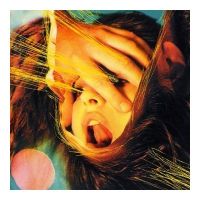
by Joe Muggs
Flaming Lips are one of those bands who are nigh-perfect on paper – funny, psychedelic, modernist, refreshingly free of the hectoring or needy tendencies of rockstars with their degree of ambition, natural showmen – yet somehow I never felt they quite clicked. Their contemporaries Mercury Rev always did the post-slacker psychedelia thing far more convincingly, and for all their exploratory tendencies the Lips' prog-rocky structures always just seemed a little strained, a little mapped-out, a little bit "do you see how mad we're being? DO YOU?"
So this album, their 12th in 23 years, came as a very wonderful surprise – because Embryonic simply sounds like people having a really, really good time making barmy noises. Clearly heavily influenced by the “just jam then edit it into songs later” approach of 1970s German groovers Can, most of the songs here chug along on distorted drums with kooky guitar riffs and some wild synth sounds ricocheting off the rhythms in all directions. And leader Wayne Coyne no longer sounds so much like a rock opera narrator, but locks into the tracks, feeling like he is part of the music first, cosmic showman second.
It still gets a touch self-consciously wacky on occasion – this is an album featuring songs called “I Can Be A Frog” and “Sagittarius Silver Announcement”, after all – but the wackiness is no longer telegraphed; instead this sounds like a band really well at ease with themselves and kicking out the jams like we'd always wished they would. Embryonic on Amazon
 Mayra Andrade, Stória, Stória (Sterns)
Mayra Andrade, Stória, Stória (Sterns)
by Peter Culshaw
For a country that lies adrift in the South Atlantic, Cape Verde punches way above its weight musically. Following the great Cesaria Evora and a host of others - Lura and Sara Tavares among them - comes Mayra Andrade, whose debut, Navega, a mix of realism (songs about flawed democracy) and romanticism (love and loss), was astonishingly assured.
The cosmopolitan Andrade, who these days is based in Paris, sings in Kriolu and French, and adds her own elements of jazz, bossa nova and chanson to the bitter-sweet African and Portuguese elements in Cape Verdean music. Following the trade winds to Brazil she worked in the “Compania dos Technicos” a legendary studio among samba buffs in Copacabana in downtown Rio.
With Brazilian producer Alĕ Sequeuri and top arranger, cellist Jacques Morelenbaum at the helm, the centre of gravity is Brazil, and you can almost hear the balmy breeze floating in off the beach, but eclectic elements keep the sound picture interesting including French accordion, African kora and the Cuban jazz pianist Roberto Fonseca. If at times she seems a little detached from the proceedings, this is never less than hugely pleasant in a breezy laid-back way and often utterly delightful. Storia, storia... on Amazon
 Netsayi, Monkey’s Wedding (World Connection)
Netsayi, Monkey’s Wedding (World Connection)
by Howard Male
Netsayi is not a happy bunny in "Weaves and Magazines" - one of the more immediately memorable songs on her second album. Against a slow township jive groove she methodically and mercilessly takes an ex-friend apart for betraying and disappointing her. It makes for an amusing if slightly awkward listening experience. The title originates from the line "I hope you don't still spend all your money on weaves and magazines." See what I mean? It’s a veritable "You’re So Vain" with claws. But Monkey’s Wedding isn’t all incisive bitchery, far from it. The joy of the album overall is that every song represents a different side of this London-born Zimbabwean singer.
The exquisitely delineated ballad "Chosen Ones" seems to be, in part at least, a muted and resigned protest song against an indifferent or non-existent God, written on behalf of every God-fearing yet Godforsaken nation on Earth. It has the most bitterly poignant opening line I’ve come across in a long time: "Funny kind of chosen ones, chosen to overcome." But then next up is "Cop Shop" in which a more amused and amusing Netsayi tells us the story of when her mother was chatted up by a polyester trouser-wearing cop following a robbery. It’s an unlikely brew of Ian Duryesque swagger set against a musical backing which is clearly a tribute to fellow Zimbabwean protest singer, the legendary Thomas Mapfumo. Then there’s "Teenagers" which is a nostalgic without being sentimental picture of Netsayi’s childhood, as vivid as an old Polaroid snap. And so on, with each song adding to the overall picture.
But the other pleasure here is in the arrangements. Alongside a fairly traditional use of piano, acoustic guitar and percussion there’s some quirky interjections of buzzing and bubbling vintage synthesiser cheekily peaking through the cracks. The Devil is in the details, and the details here are devilishly diverting with different textures and sounds seemingly manifesting themselves for the first time with each new listen. The miracle is that the cake never seems over iced; there’s still plenty of air and space on this record despite its complexities. This very mixed bag may not grab in its entirety at first (structurally it’s not helped by the fact that its least diverting track is its opener) but persevere and it will eventually get its claws into you - in a good way of course. Monkey's Wedding on Amazon
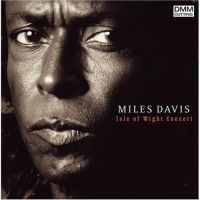 Miles Davis, Isle Of Wight (Columbia)
Miles Davis, Isle Of Wight (Columbia)
by Marcus O’Dair
Jazz fusion gets a bad rep these days, often deservedly so. But back at the end of the 60s, when Miles Davis originally combined jazz with the funk of Sly And The Family Stone and a Hendrix-inspired rock sensibility, it was a marriage every bit as artistically successful as his pioneering of modal jazz on 1959’s Kind Of Blue, or of “cool jazz” a decade before that.
It’s a style Davis explored most famously on Bitches Brew, one of the most seminal (and highest selling) jazz albums of all time. Yet that record was in large part assembled after the event, producer Teo Macero splicing tapes to shape the tunes in post-production. What’s remarkable about Isle Of Wight, recorded during the same period but only now released as part of Columbia’s gargantuan, 52-album Miles Davis box-set, is that it captures live renditions of several of that album’s tracks. With a crowd reportedly numbering 600,000 and a line-up featuring Hendrix and Sly as well as The Doors and The Who, the performance sees Miles grabbing with both hands the opportunity to grow beyond mere darling of the jazz scene; to become, in his own words, “accepted by black audiences on the same terms as The Temptations”.
Yet though at least one contemporaneous critic accused this music of (yawn) killing jazz, due to its incorporation of wider influences, the crunchy harmonies and extended track durations hardly represented a dumbing down. Indeed, perhaps the most noteworthy aspect of Davis’ escape from the jazz ghetto – represented so vividly on this disc – is that it was achieved without remotely compromising his musical vision. Rarely indeed can any artist have made a move so simultaneously populist and avant garde. Yet though Isle Of Wight contains some of the most abstract work of Davis’ career, with fuggy, fuzzy electric keyboards from Chick Corea and Keith Jarrett, his trumpet offers a clear melodic focus throughout. Even where he drifts into silence, the rhythm section’s heavy, neo-funk grooves offer hooks amidst the otherwise viscous sonics.
Altogether, this magnificent album stands as a vital document of one of the most rewarding stages in the trumpeter’s ongoing evolution, a process that continued right up to his death in 1991. All that’s missing is the ever-dapper Davis’ orange leather jacket and sequined blue jeans – and for that we can look to the 2004 DVD. The Isle of Wight Concert on vinyl on Amazon
Various, In The Christmas Groove (Strut)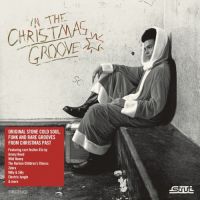
By Thomas H Green
Musical surprises are harder to muster in an era when anyone can summon up the most obscure music imaginable simply by typing a key phrase into their laptop. This is never truer than at Christmas when, unless you're pre-teen, every seasonal treat has been over-exposed to such an extent that even hardy brilliant numbers such as "Fairytale Of New York" are slowly drained of their charm. Enter Strut Records to save the day, crate-diggers extraordinaire and home to all manner of off-piste disco, funk and soul. Subtitled "Original Stone Cold Soul & Rare Groove From Christmas Past", their new Christmas collection gathers an ebullient selection of righteous festive oddments from the Sixties and Seventies, songs that probably sold eight copies each the first time round but now sound sassily retro and entertaining. It's patchy, of course, but most of it's a blast, from the brass-fuelled gospel-funk of Zebra's "Christmas Morning" to a Hammond-addled take on "Auld Lang Syne" by an outfit called The Black And White Affair, and the blues-shouting R&B of "Boogaloo Santa Claus" shouldn't me missed. In any case, it all beats pretending "Christmas Time (Don't Let The Bells End)" by The Darkness is a riot of ironic fun at the office do. In The Christmas Groove on Amazon
 Zaza Fournier, Zaza Fournier (Warner Classics And Jazz)
Zaza Fournier, Zaza Fournier (Warner Classics And Jazz)
By Thomas H Green
French accordionist and singer Zaza Fournier receives a British release for her debut album a year after its success in her homeland. Looking as if she's just time-travelled in from a particularly lurid Technicolor Fifties rock'n'roll flick, her music has a Parisian café swing to it but tends to veer away from Gallic melancholy in favour of bubbly tango-pop frolicking. While there are exceptions, such as the waltz ballad "Mon Slow", it's mostly unashamedly cheery stuff, tinted with the good-natured melodrama of a raucous cabaret night. Fournier herself, as colourful mistress of ceremonies, comes off like a female French fusion of Madness and The Gotan Project, which is surely no bad place to be. Zaza Fournier on Amazon
Blakroc, Blakroc (V2/Coop)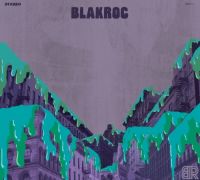
By Thomas H Green
The meetings between rock and rap have not always been pretty, whether we're talking Cypress Hill or, God help us, Limp Bizkit. Ohio blues rockers Black Keys, however, avoid the pitfall of catering to hip hop's deluded affection for squalling heavy rock (see Ice T's Body Count, Kid Rock, Lil' Wayne and many more) and stick to raw garage-riffing and suitably vast drum-beats. Their throbbing dirty rhythm tracks gel invigoratingly with the gathered rap talent, whether Ludacris on the rude, vital "Coochie" or gutsy singer Nicole Wray working the heavy soul number "Why Can't I Forget Him". It doesn't hurt that the project was conceived by successful entrepreneur and former Jay-Z protégé Damon Dash, thus the calibre of MC is extremely high -- Mos Def, Q Tip, RZA and, oddly since he died in 2004 and the vocal tracks are all supposedly live, Ol' Dirty Bastard. This minor quibble hardly matters since Blakroc is the rawest, most successful collision of black music's present with its bluesy prehistory since Nas's rip-roaring "Bridging The Gap" single in 2004. Blakroc at Amazon
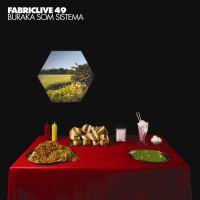 Buraka Som Sistema, Fabriclive 49 (Fabric)
Buraka Som Sistema, Fabriclive 49 (Fabric)
By Thomas H Green
If there is anyone left alive who still associates world music with jumper-wearing worthies discussing Andean nose-flutes in a yurt at the WOMAD Festival, they need to stick this on their stereo and pump it up. One of the most exciting areas in electronic dance right now is modern global beats, DJs such as Diplo and Switch realising there's a whole untouched international vein of music ripe for creatively plundering. Kings of this burgeoning scene are Buraka Som Sistema, a Portugese trio whose speciality is combining Angolan kuduro music, itself a melding of African percussion and hip hop, with contemporary techno and electro. Their new mix CD for London's super-sussed Fabric club never wanders far from a very sweaty dancefloor, touching everything from trance to dubstep along the way, but always maintaining a rich flavour of original Afro seasoning. Featuring loads of their own music, as well as cuts from DJ Znobia, Skream, Zomby, Major Lazer, and Diplo, Fabriclive 49 is a noisy and welcome wake-up call. Fabriclive 49 on Amazon.
Tom Petty & The Heartbreakers, Live Anthology (Warner Bros)
by Adam Sweeting
Tom Petty has never enjoyed the critical reverence lavished on Bruce Springsteen or Neil Young, but Petty and his Heartbreakers grew out of a lineage of classic American bands stretching back through the likes of The Band, Creedence Clearwater and The Byrds. The broad streak of Dylan in Petty's songwriting dropped the fizzing Alka-Selzter into the mix.
All the evidence you need is contained in this ambitious four-disc live collection, culled from oceans of tape spanning the years 1978-2007. Super-dedicated collectors can opt for the deluxe boxed version containing an extra CD, a Blu-Ray disc and a couple of DVDs. On the increasingly rare occasions when he grants an interview, Petty plays the laconic tunesmith from Gainesville, Florida who doesn't want to clutter his head with pretentious critical analysis, but this release must make him one of rock's most comprehensively anthologised artists, once you add it to 1995's six-disc Playback box and Peter Bogdanovich's splendid documentary, Runnin' Down A Dream.
It may have counted against the Heartbreakers that they were always a little too accomplished for their own good. Thought they earned their first break in the UK in the aftermath of Punk, thanks to Petty's faintly delinquent vibe and Ramones-esque leather jacket, they were enormously more skilful than their contemporaries. Even on their 1976 debut album they were displaying the kind of restrained craftsmanship you'd normally expect from seasoned session-men, and it was no great surprise when guitarist Mike Campbell and keyboards ace Benmont Tench started turning up on albums by all manner of rock'n'roll luminaries.
But that unflappable expertise has been the bedrock of their longevity, and it underpins the breadth of material in the Live Anthology. Though somebody should be strung up for omitting "Listen To Her Heart", one of the most gratifying aspects is the inclusion of a generous portion of cover versions. You can tell a lot about a band from what they do with other people's songs (and which ones they choose), and there are some corkers here. Petty wisely doesn't attempt to replicate Shirley Bassey's vocal on "Goldfinger", but the band deliver a stonking instrumental performance, Campbell revelling in some authentic John Barry guitar twang. A 1993 take of Thunderclap Newman's "Something In The Air" is as evocative as it's unexpected, and Campbell (again) gets to run amok on a version of Fleetwood's Mac's "Oh Well". The combo play Bo Diddley's "Diddy Wah Diddy" like the world's greatest bar band, and take the Grateful Dead's "Friend of the Devil" at an easy canter.
The choice of original Petty material takes in highlights like "American Girl", "Breakdown", "Refugee", a lump-in-the-throat reading of "Southern Accents" and a triumphantly resurrected "Louisiana Rain", while throwing new light on some of their less celebrated pieces. They add a steely funkiness to "Nightwatchman", and "Mary Jane's Last Dance" exudes an aura of lounging menace. There's a superb semi-acoustic "I Won't Back Down", recorded under the giant blue whale at a benefit gig for New York's Museum of Natural History, while "Square One" (from 2006's Highway Companion) is one of the emotional hotspots of the collection.
If you never got Petty, maybe even all this won't change your mind, despite its knockdown retail price, but it's chiefly aimed at the faithful fanbase. Which is likely to be very happy indeed. Live Anthology on Amazon
 Norah Jones, The Fall (Blue Note / EMI)
Norah Jones, The Fall (Blue Note / EMI)
by Adam Sweeting
In which Miss Jones slips further away from her soft-jazz origins into a kind of ethereal blues-country-rock, helped along by a crafty array of studio tweaks from producer Jacquire King (of Tom Waits and Kings of Leon fame). She gets some songwriting assistance from Jesse Harris (writer of Don't Know Why) and Ryan Adams, but the most impressive songs from an intoxicating bunch are down to Jones alone. The opener, Chasing Pirates, immediately grabs your ear with its chugging electro-pulse and gentle funkiness, yet the distinctive vocal hook could only be Norah Jones. You'd swear that was Neil Young clanking out the stark guitar intro of "I Wouldn't Need You", but then Jones' sensuous vocal and wry, bittersweet lyric takes the song swirling far away from Neil-world. Finely wrought gems abound, like the deliciously tipsy waltz rhythm and fiendishly catchy double-tracked chorus of "You've Ruined Me", or the irresistible clip-clop beat of "Tell Yer Mama", a song in which every instrument seems to have been imperceptibly warped by some mind-bending substance. Brilliant guitar solo by Lyle Workman too. For a finale, Jones has saved up "Man of the Hour", a bluesy, deadpan hommage to her St Bernard dog - "You never argue / You don't even talk / And I like the way you let me lead you / When we go outside and walk". Some suspected Jones's phenomenal early success was a fluke, but the truth is she's just a natural. The Fall on Amazon
Peter Culshaw also recommends:
Jimi Tenor/Tony Allen, Inspiration Information Vol 4 (Strut)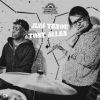
An unlikely head-to-head between Finnish maverick Jimi Tenor and legendary Nigerian drummer Tony Allen, the co-creator, with Fela Kuti of Afro-beat. Tunes deal with Sado-masochism, the UK immigration system and general apocalypse. At times sketchy, it’s a Baked Alaska of a disc with cool Finnishness and hot Nigerian flavours being surprisingly palatable together. Inspiration Information Vol 4 on Amazon
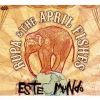 Rupa and the April Fishes, Esta Mundo (Cumbancha)
Rupa and the April Fishes, Esta Mundo (Cumbancha)
This San Francisco-based band follow the multi-lingual musical fiestas of Manu Chao, Pink Martini and Lhasa, and add chanson, ska and Balkan oom-pah delirium. They sound like they would be a winner live, preferably at a hip, riotous and sexy West Coast wedding ending up in the small hours in the hot tub under the stars discussing the state of the world, whether Obama has blown it, and swapping stories of strange Mexican festivals of the dead. Esta Mundo on Amazon
Joe Muggs also recommends:
Edward Williams, Trunk Records present Life On Earth (Trunk) 
Yes, it's the music from David Attenborough's first tour de force – unearthed by ever-reliable archivist Johnny Trunk – and it is stunning. Above and beyond nostalgia value (which is has in spades), it's a peculiar, subtly romantic, very English electronically enhanced orchestral work of sometimes heart-stopping beauty. Life On Earth on Amazon
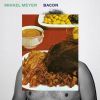 Mikkel Mayer, Bacon (Stadler & Waldorf)
Mikkel Mayer, Bacon (Stadler & Waldorf)
Danish producer attempts dubstep, gets is slightly wrong, adds angularity, gurgling acid house sounds and Swahili rapping from Tanzanian MCs – unsurprisingly, this is hit-and-miss, but when it hits it really hits the spot. Bacon on Amazon
Memory Tapes, Seek Magic (Something In Construction) 
Hipster Philadelphia indietronica producer beloved of the likes of Spike Jonze makes hazy, uneasy, sometimes lovely parallel world pop – sometimes the reference points (Aphex Twin, New Order, Galaxie 500) are too blatant, but there's much to love here. Seek Magic on Amazon
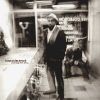 King Midas Sound, Waiting For You (Hyperdub)
King Midas Sound, Waiting For You (Hyperdub)
Long-time bass manipulator and noisenik Kevin Martin tones it down expertly for collab with the rich Trinidadian-inflected poetry and singing of Roger Robinson and plaintive tones tones of co-vocalist Hitomi; like the best early work of Tricky, it combines intense claustrophobia with convincing psychodramas and true soulfulness. Strange magic. Waiting For You on Amazon
Various 15 Years of Metalheadz (Metalheadz)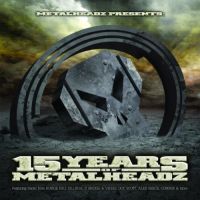
You may know Goldie as TV personality or even classical conductor, but his greatest achievement has been as label curator. These are some of the highpoints not only of drum & bass but of British electronic music's long history – the elegant, gleaming sci-fi constructions here sound as futuristic and almost as dangerous as they ever did. 15 Years of Metalheadz on Amazon
Compilation of the Month:
Kraftwerk, The Catalogue (Mute)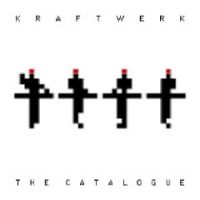
by Robert Sandall
The first thing to say about The Catalogue is that it isn't quite what it claims to be. The eight albums in this re-mastered box set do not aim to tell the whole story of Germany's most influential pop group. Kraftwerk released three albums before they achieved international recognition with their first hit, “Autobahn”, in 1974. But nobody now or then has paid much heed to Ralf Hutter and Florian Schneider's early experiments with synthesisers. As classical music students with links to the German underground movement known as "krautrock", Kraftwerk had no designs on a pop audience until Hutter decided to fashion a German riposte to "I Get Around" by The Beach Boys. The result – “Autobahn” – moved Planet Rock on its axis and dramatically revised the way synthesisers were perceived. No longer the preserve of modernist composers like Stockhausen and virtuoso prog-rockers of the Yes school, these bulky electronic tone generators came to be seen as the engines of cool innovation and catchy hooks. By the end of the 1970s everybody, from the post-punk electro crowd to the house producers of Detroit, was following Kraftwerk's lead.
Thirty years later most of their recordings still possess a pristine, timeless elegance coupled with a wide-eyed sense of fun. Their running gag – are we operating the machines or are they manipulating us? - was as old as the 1920s Fritz Lang movie Metropolis, but even on their 1978 meisterwerk The Man Machine Kraftwerk never overplayed it. Their view of mechanised modernity was by turns tinged with wonder and sadness. “Showroom Dummies” from Trans Europe Express remains one of pop's great odes to alienation, and their naïve fascination with movement for its own sake was still inspiring wonderfully intricate, propulsive music on 2003's Tour De France, the last album in the box.
It isn't all great. Kraftwerk reigned supreme up to the amusingly playful Computer World in 1981, then seemed to coast, or idle, for 20-odd years. Electric Cafe – retitled Techno Pop for this box – suggested that by 1986 Kraftwerk were happy to surf the wave they had created. Their 1991 remix/hits album The Mix likewise seemed to be bowing to fashion and added little to the originals. But for six of its eight hours, The Catalogue is a terrific demonstration of how repetition and restraint, sensitively deployed, can do as much to make pop music live on in the popular consciousness as any amount of frantic riffing and vocal histrionics. Kraftwerk may well be remembered as deadpan electronic engineers, the men machines, but their real message is the old minimalist mantra: that less can mean more. The Catalogue on Amazon
Stinker of the Month:
 Music From The Vatican Featuring the voice of Pope Benedict XVI, Alma Mater (Polydor/Geffen)
Music From The Vatican Featuring the voice of Pope Benedict XVI, Alma Mater (Polydor/Geffen)
by Adam Sweeting
Oi! Your Holiness! You’re having a laugh, aintcha? I can only imagine the record company thinking behind this bizarre release went like this: there are 1 billion Catholics in the world, and if just 1 per cent of them buy a copy, we’re quids in. It’s also a perfect pretext for newspapers to write those “the Pope makes album for the same label as Guns N’Roses and Nirvana!” stories. Needless to say, the Pontiff himself wasn’t to be spotted down at Air Lyndhurst laying down vocals with headphones clamped round his ears. His contribution – litanies, prayers and chants in five languages – were snipped from Vatican Radio recordings of his regular ecclesiastical “gigs”, and laid over the orchestral tracks. Even should you understand Italian, Latin, German etc, the results have an unsettling disjointed quality, as if the Pope’s performances have literally been phoned in. As for the music, billed as “modern classical” (some of it by soundtrack composer Simon Boswell), it’s merely a set of cut-and-paste orchestral pieces of severely restricted harmonic interest, saturated in weepy violins and lachrymose choral singing. The music-composing software known as Emily Howell could probably have done it just as well. Congratulations to Radios 2 and 3 for giving this nonsense the cold shoulder. Alma Mater on Amazon
Share this article
Subscribe to theartsdesk.com
Thank you for continuing to read our work on theartsdesk.com. For unlimited access to every article in its entirety, including our archive of more than 15,000 pieces, we're asking for £5 per month or £40 per year. We feel it's a very good deal, and hope you do too.
To take a subscription now simply click here.
And if you're looking for that extra gift for a friend or family member, why not treat them to a theartsdesk.com gift subscription?
more New music
 Music Reissues Weekly: Andwella - To Dream
How a cult psychedelic band laid the ground for a massive Demis Roussos hit
Music Reissues Weekly: Andwella - To Dream
How a cult psychedelic band laid the ground for a massive Demis Roussos hit
 Album: Barry Adamson - Cut to Black
The coolest Mancunian returns with a lesson in style
Album: Barry Adamson - Cut to Black
The coolest Mancunian returns with a lesson in style
 Laufey, Royal Albert Hall review - fans in heaven
The sequence of heartbreak songs sounded same-y
Laufey, Royal Albert Hall review - fans in heaven
The sequence of heartbreak songs sounded same-y
 The Great Escape Festival 2024, Brighton review - a dip into day one and the elephant-in-the-room
An opening snapshot of Brighton's multi-venue showcase
The Great Escape Festival 2024, Brighton review - a dip into day one and the elephant-in-the-room
An opening snapshot of Brighton's multi-venue showcase
 Album: Billie Eilish - Hit Me Hard and Soft
Desire and longing are the submersibles that propel Eilish’s riveting third album
Album: Billie Eilish - Hit Me Hard and Soft
Desire and longing are the submersibles that propel Eilish’s riveting third album
 Album: Jack Savoretti - Miss Italia
Middle of the road singer embraces family history with an album of Italian pop
Album: Jack Savoretti - Miss Italia
Middle of the road singer embraces family history with an album of Italian pop
 Hidden Door 10th Birthday Party, St James Quarter, Edinburgh review - going underground
Car park transformed into gallery/rave venue for multi-art celebration
Hidden Door 10th Birthday Party, St James Quarter, Edinburgh review - going underground
Car park transformed into gallery/rave venue for multi-art celebration
 Conchúr White, St Pancras Old Church review - side-stepping the past to embrace the future
Northern Irish troubadour pushes forward
Conchúr White, St Pancras Old Church review - side-stepping the past to embrace the future
Northern Irish troubadour pushes forward
 Album: Beth Gibbons - Lives Outgrown
Intimate songs of unavoidable sorrow
Album: Beth Gibbons - Lives Outgrown
Intimate songs of unavoidable sorrow
 Pop Will Eat Itself, Chalk, Brighton review - hip hop rockers deliver a whopper
Eighties/Nineties indie-tronic dance mavericks take the roof off
Pop Will Eat Itself, Chalk, Brighton review - hip hop rockers deliver a whopper
Eighties/Nineties indie-tronic dance mavericks take the roof off
 Music Reissues Weekly: Little Girls - Valley Songs
Deserved tribute to the Los Angeles new wave popsters who failed to click
Music Reissues Weekly: Little Girls - Valley Songs
Deserved tribute to the Los Angeles new wave popsters who failed to click
 Album: Ani DiFranco - Unprecedented Sh!t
Tough, uncompromising, unflinching
Album: Ani DiFranco - Unprecedented Sh!t
Tough, uncompromising, unflinching

Add comment